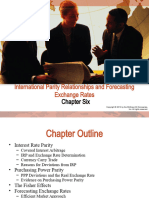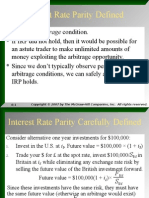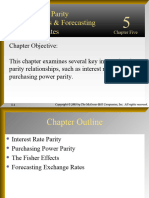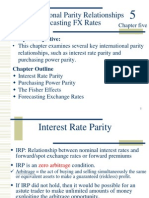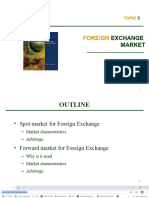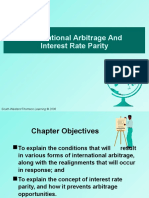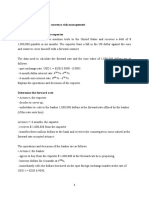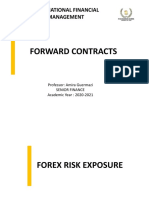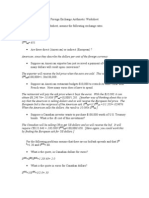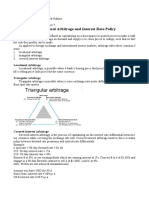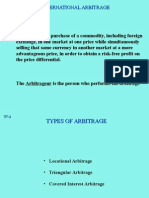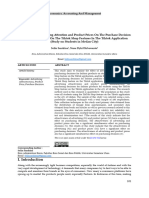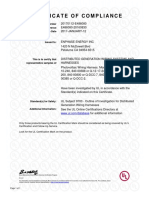0% found this document useful (0 votes)
67 views47 pagesInternational Parity Relationships and Forecasting Exchange Rates
The document discusses interest rate parity relationships and how they relate to exchange rate determination. It provides examples of covered interest arbitrage, deviations from interest rate parity, and how interest rate parity implies that forward exchange rates are defined by spot rates adjusted for interest rates in each country. Technical, fundamental, and efficient market approaches to forecasting exchange rates are also mentioned.
Uploaded by
cikedis.chocoCopyright
© © All Rights Reserved
We take content rights seriously. If you suspect this is your content, claim it here.
Available Formats
Download as PPTX, PDF, TXT or read online on Scribd
0% found this document useful (0 votes)
67 views47 pagesInternational Parity Relationships and Forecasting Exchange Rates
The document discusses interest rate parity relationships and how they relate to exchange rate determination. It provides examples of covered interest arbitrage, deviations from interest rate parity, and how interest rate parity implies that forward exchange rates are defined by spot rates adjusted for interest rates in each country. Technical, fundamental, and efficient market approaches to forecasting exchange rates are also mentioned.
Uploaded by
cikedis.chocoCopyright
© © All Rights Reserved
We take content rights seriously. If you suspect this is your content, claim it here.
Available Formats
Download as PPTX, PDF, TXT or read online on Scribd
/ 47


